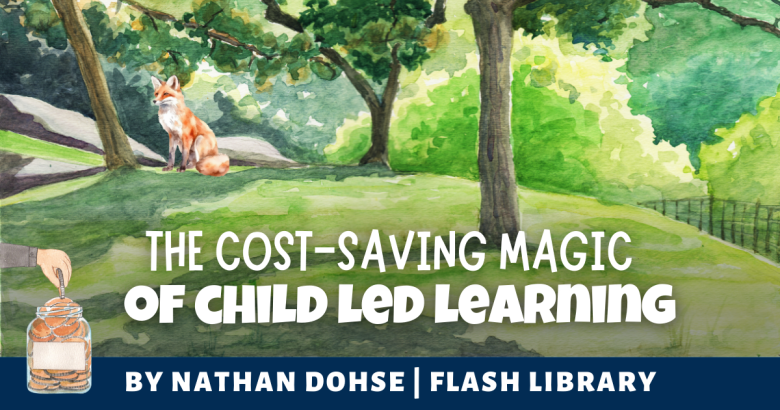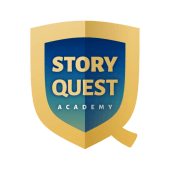Homeschooling provides the gift of tailoring education to each child’s unique needs and interests. Yet many parents feel trapped in the expensive cycle of boxed curriculums and pre-packaged resources hoping to find the right fit.
There is a better way – embracing child-led learning not only boosts engagement, but also saves money wasted on unused materials. Avoid the common mistakes of overspending before identifying passions. Instead, unleash their innate curiosity to reveal the topics most meaningful to them.
Sparking Interests First Prevents Wasted Spending
Too often, homeschool parents purchase a slew of books, manipulatives, and resources before determining what actually captivates their child. However, child-led learning flips this script.
Start by sparking curiosity using free conversation starters. Let their interests direct you to the resources worthy of purchasing. You’ll save money and sanity.
Research Age-Appropriate Topics
Begin broadly exploring subjects suitable for their age, not shopping for boxed curriculums yet. Consult free development guides and homeschool planning resources. Discover which concepts might click with your child’s current abilities and perspective. Build background knowledge before buying specific materials.
Ask About Existing Passions and Knowledge
Have open-ended conversations to learn what related topics already fascinate them. Kids will be far more engaged, building upon existing knowledge and interests. Don’t waste money on basic introductory materials if they already have context from previous discoveries.
Emphasize Engagement Over Correctness
Explain there are no “right” answers when introducing new ideas. The goal is sparking engagement, not judging their responses. This encourages free sharing of thoughts to uncover true passions, without pressure to perform. Don’t pay for graded activities if they already enjoy the topic itself.
Model Your Own Curiosity
Ask genuine wonder questions that you don’t have all the answers to either. Share what captivates you about a subject. If kids start posing their own questions after your curiosity-driven conversations, you know that topic resonates.
See If Ideas Spark Imaginative Stories
Prompt creative storytelling incorporating new concepts. Imagination and metaphor indicate an interest worth investing in. Capitalize on these passions by providing related resources while their excitement is fresh.
Let Research Reveal Lasting Interests
Guide their exploration through library books and age-appropriate online sources while interest is piqued. Once you’ve identified an ongoing passion, purchase supplemental materials they truly want. Until then, freely follow their lead.
This approach prevents wasting money on forgotten textbooks and short-lived workbooks. Kids’ organic interests direct your educational spending. Trust in their innate curiosity and creativity.
The Benefits of Child-Led Learning
Child-led learning offers benefits far beyond saving money. When kids direct their own educational journey, the entire homeschool experience is transformed.
Prevents Forced Lessons
With child-led learning, kids are intrinsically motivated to participate. You never have to cajole or bribe them into doing lessons. Their self-selected topics feel like joyful exploration, not forced academics.
Deepens Engagement
When studies originate from their curiosities, kids take ownership and dive deep. They readily research, experiment, and create self-chosen projects. This isn’t to say that a basic curriculum isn’t helpful. Especially to you as the teacher.
A basic curriculum provides a lot of structure, and you and your child may benefit greatly from that. But don’t overspend, find something basic that gives the structure you’re looking for and then supplement. Because, Child-led learning yields engagement that curriculum could never manufacture.
Cultivates Creativity and Problem-Solving
Packaged workbooks pale in comparison to the ingenuity of a child’s mind. Given space to unleash their perspectives, kids craft innovative projects and find creative solutions. Child-led learning flexes their innate critical thinking abilities.
Makes All Subjects Relevant
Tap into their interests, and suddenly kids want to apply math, science, reading and writing skills to pursue answers. Unit studies weave together their passions and academic subjects in authentic ways. Relevance keeps them motivated to learn.
Learning Lasts a Lifetime
Kids quickly forget rote lessons, but child-led discoveries leave lasting imprints. When they choose the destination, the journey is more meaningful. Their interests light the path to education that truly impacts them now and as adults.
Facilitating Child-Led Learning
Child-led learning is natural to implement. Simply provide space for regular curiosity conversations. Ask open-ended questions about their latest interests and discoveries.
Keep a running list of their fascinations – it likely covers astronomy to zoology and everything between! Gauge their level of enthusiasm, then facilitate activities that feed their interests. Libraries offer a wealth of resources once passions emerge.
Help them expand their research through age-appropriate library books, documentaries, museums, field trips, online sources, household experiments, nature explorations and more.
Watch for recurring topics that engage them over time.
When a clear interest emerges, carefully chosen unit studies allow you to incorporate reading, writing, math, science and art. Add supplemental books and resources once you know they will be used. There are endless ways to nurture self-directed learning across subjects.
The key is following their lead – not expecting their interests to fit traditional academics. While child passions may not cover every subject, you can still guide their learning in needed areas through real-world connections. Above all, tap into their intrinsic drive to learn.
Saving Money and Sparking Motivation
Homeschooling does not have to mean breaking the budget on overpriced curriculum trying to spark engagement. Child-led learning prevents both wasted spending and burned-out kids.
Lean into their natural curiosity and unleash creativity. Passions exhilarate learning far beyond any textbook. Guide their self-directed education journey, and watch motivations soar.
Read More!
- Log in to post comments





